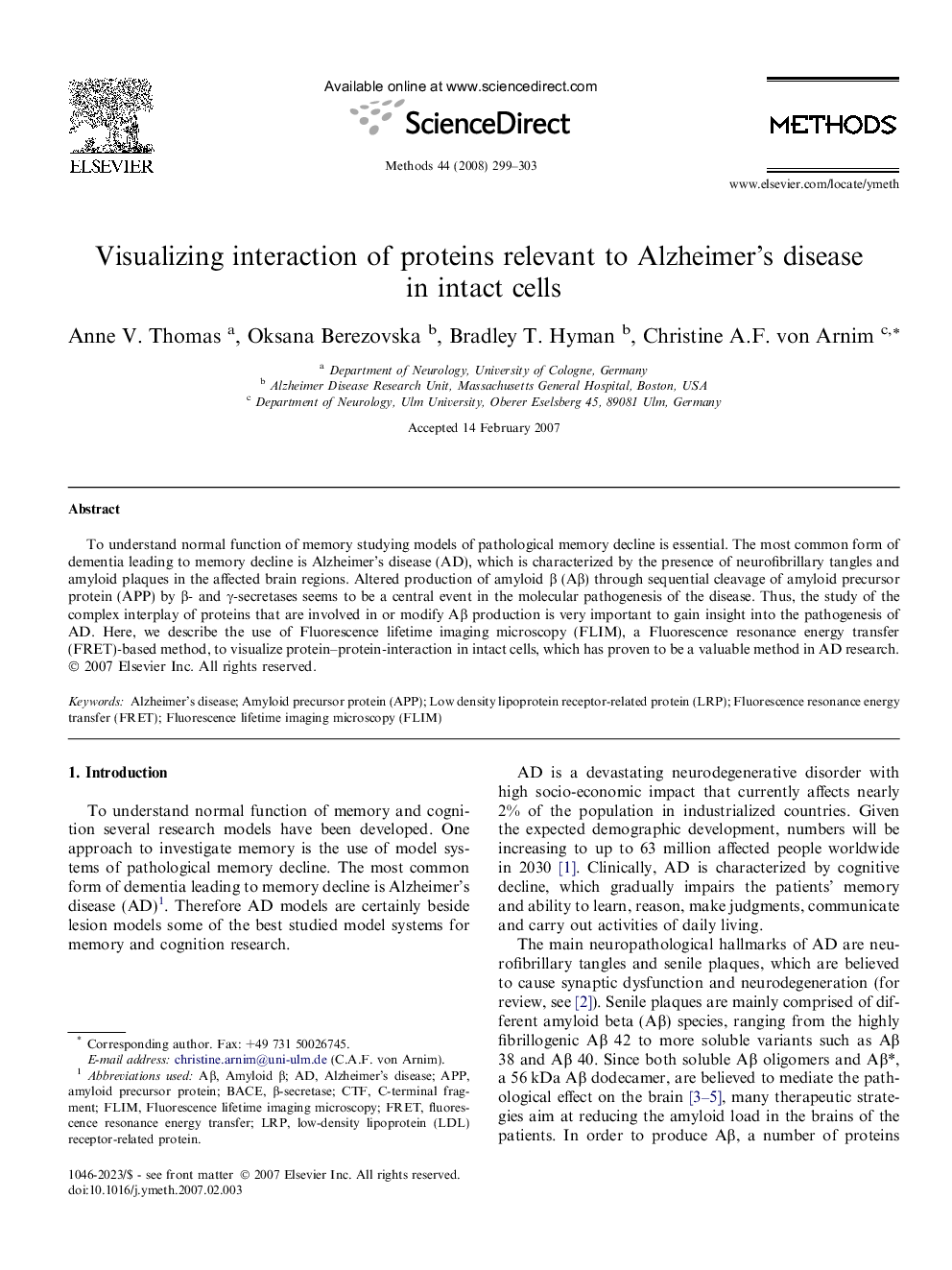| Article ID | Journal | Published Year | Pages | File Type |
|---|---|---|---|---|
| 1993942 | Methods | 2008 | 5 Pages |
Abstract
To understand normal function of memory studying models of pathological memory decline is essential. The most common form of dementia leading to memory decline is Alzheimer's disease (AD), which is characterized by the presence of neurofibrillary tangles and amyloid plaques in the affected brain regions. Altered production of amyloid β (Aβ) through sequential cleavage of amyloid precursor protein (APP) by β- and γ-secretases seems to be a central event in the molecular pathogenesis of the disease. Thus, the study of the complex interplay of proteins that are involved in or modify Aβ production is very important to gain insight into the pathogenesis of AD. Here, we describe the use of Fluorescence lifetime imaging microscopy (FLIM), a Fluorescence resonance energy transfer (FRET)-based method, to visualize protein-protein-interaction in intact cells, which has proven to be a valuable method in AD research.
Keywords
Related Topics
Life Sciences
Biochemistry, Genetics and Molecular Biology
Biochemistry
Authors
Anne V. Thomas, Oksana Berezovska, Bradley T. Hyman, Christine A.F. von Arnim,
